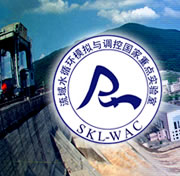Balancing the Triple Bottom Line in Water Supply Planning for Utilities
Barry Liner
To achieve the triple bottom line (TBL) of sustainability, total water management efforts must analyze alternatives to address the potentially conflicting goals of economics (financial), environmental, and social issues. Traditionally, decisions were heavily influenced by economics. The alternative with the best cost-benefit ratio was generally considered to be superior. As the need to make sustainable decisions becomes increasingly important, a similar need surfaces for a methodology to balance sustainability objectives in a realistic manner. Goal programming is a technique that uses optimization methods to provide a means to solve a problem by striving towards multiple objectives simultaneously. This research applies an optimization framework to the integrated water supply planning process. The research demonstrates a methodology that can successfully generate a feasible set of alternative solutions while balancing all three goals of the TBL. Furthermore, the research showed that the goal programming methodology could use existing data (utility master plans) and widely available tools (Excel) to execute the model and develop trade-offs between the various aspects of the TBL. Demonstration data from a California utility’s publicly available water supply master plan were used to define the trade-offs between the relative costs for enhanced environmental and social goal achievement. The methodology explicitly details the societal and environmental values for each water management alternative, including desalination, dam, water rights exchanges, and drilling of new wells. The decision analysis of water supply strategies is enhanced through the incorporation of environmental and social sustainability in a balanced manner.
三重底线平衡理论在供水规划中的应用
作者:Barry Liner
期刊:水资源规划与管理杂志
刊登日期:2011年8月
编目:137卷第4期
页码:335-342
为了实现可持续性发展的社会、经济和环境的三重底线(TBL),全面的水资源必须分析替代方案,以解决目标潜在冲突的经济(金融)、环境和社会问题。传统上,决策受到经济的影响很大。选择成本效益最高的通常会认为是较好的。随着做出可持续性决定的需要变得越来越重要,同样需要以现实的方式来平衡可持续性发展的目标。目标规划是一种技术,它使用优化方法提供一种解决问题同时追求多重目标的方法。本研究将最优化框架运用到综合供水规划过程中。研究论证了一种方法,这种方法可以在平衡好三重底线(TBL)的三个目标的同时成功地生成一套可行的替代解决方案。此外,研究还表明目标规划方法可以使用现有的数据(市总体规划)和广泛使用的工具(excel)来权衡三重底线各个方面的模式和发展问题。其中,加州一个公用事业单位供水规划的实际数据被用来权衡加强环境和社会目标的方案的相对成本。这个方法明确了每个水资源管理决策包括海水淡化、大坝、水权交换以及钻井的环境价值。通过将环境和社会的可持续发展考虑在内,增强了供水战略的决策分析。

